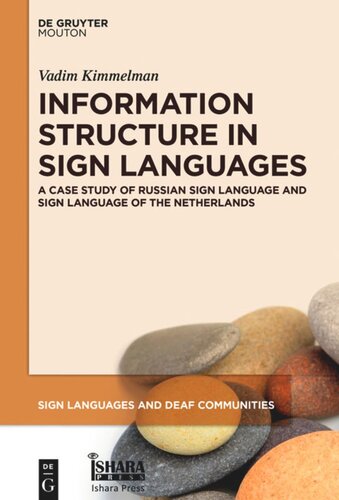

Most ebook files are in PDF format, so you can easily read them using various software such as Foxit Reader or directly on the Google Chrome browser.
Some ebook files are released by publishers in other formats such as .awz, .mobi, .epub, .fb2, etc. You may need to install specific software to read these formats on mobile/PC, such as Calibre.
Please read the tutorial at this link: https://ebookbell.com/faq
We offer FREE conversion to the popular formats you request; however, this may take some time. Therefore, right after payment, please email us, and we will try to provide the service as quickly as possible.
For some exceptional file formats or broken links (if any), please refrain from opening any disputes. Instead, email us first, and we will try to assist within a maximum of 6 hours.
EbookBell Team

4.8
74 reviewsThis book presents a first comprehensive overview of existing research on information structure in sign languages. Furthermore, it is combined with novel in-depth studies of Russian Sign Language and Sign Language of the Netherlands. The book discusses how topic, focus, and contrast are marked in the visual modality and what implications this has for theoretical and typological study of information structure. Such issues as syntactic and prosodic markers of information structure and their interactions, relations between different notions of information structure, and grammaticalization of markers of information structure are highlighted. Empirical studies of the two sign languages also showcase different methodologies that are used in such research and discuss their advantages and disadvantages. The book contains a general introduction to the field of information structure and thus can be used by linguists new to the field.